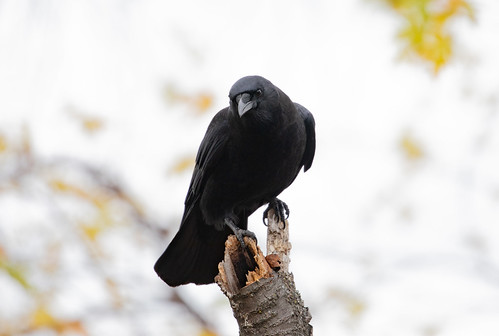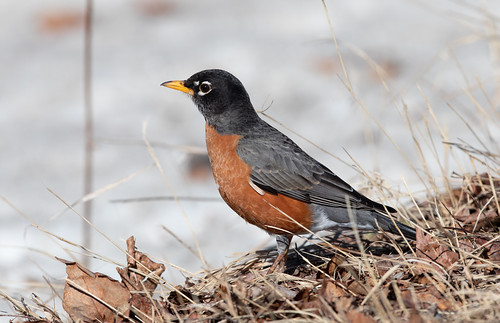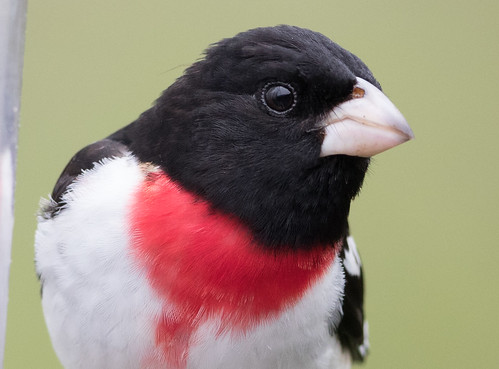If you were to ask me today what my favorite season is, chances are I’d say this one—the transitional period as winter slowly melts into spring. On some days I look out on Lake Superior and blue water beckons, the ice gone. Then the wind changes direction and the ice suddenly reappears. It sloshes back and forth for weeks even as it shrinks and breaks apart. April Fools blizzards are real, but so is the melting.
This month I’ve been showing my 19-month-old grandson how when you step gently on the thin ice sheet covering a puddle, it crazes in a beautiful pattern as water seeps through the cracks. When you stomp on it, sparkly water leaps up in a fountain around your boots.
While Walter and I were doing this last week, crows were flying over carrying sticks. He's starting to recognize them and their caws.
His front yard doesn’t have the right trees to bring in chickadees, and right now the ground is too icy and slippery to manage the steep slope of his backyard down to Tischer Creek, so he’s mostly seeing chickadees through the window when they visit the feeder, but he's paying more attention to them in bare tree branches now, even at a distance. It’s much easier to see birds in trees before the leaves pop out, another reason to love this time of year.
Of course, early spring loses its luster during ice storms or mornings when the temperature is in single digits Fahrenheit. But then I look out the window at hundreds of redpolls still crowding my feeders and twittering up in my trees—these true winter finches who were the very most wonderful backyard characters this winter. (You can hear five minutes of redpoll twittering that I recorded on 27 March here.) Redpolls will soon light out for the tundra, but right now they’re here in the biggest numbers of the season even as robins are piping in with their spring song, a combination we can enjoy at no other time of the year.
Several starlings spent the winter in my neighborhood. I enjoy their songs and love how sparkly their plumage is right now, but they steal nest cavities from Hairy and Red-bellied Woodpeckers and flickers. Last summer I even caught one checking out my chickadee nest. So whenever I notice a starling at my office window feeder, I wave my arm. Starlings are wary, so off it goes.
Some other birds at my feeder ignore my hand-waving. My chickadees aren’t the least bit intimidated, and this year, by mid-February, my female Red-bellied Woodpecker had figured out my pattern—now she gives me a beseeching look if I don’t wave the starlings off quick enough. Several juncos overwintering on Peabody Street have also grown accustomed to my face and stand their ground when I chase off the starlings.
Redpolls aren’t homebodies like these birds—they wander throughout winter. Some individuals may stick around for a week or more even as others in the same feeding flocks are new arrivals. For the first month or so that redpolls were visiting my yard, the ones at that window feeder were as skittish as the starlings. Now quite a few redpolls recognize me and stay in the feeder or the closest tree branches when I chase off the starlings.
I can’t begin to express how much I love it that these birds recognize and tolerate me. I love that my chickadees come closer when they know I’m at the window, and that my Red-bellied Woodpecker sees me as an ally. My friend Mark Roser celebrates that lovely connection we humans can forge with the birds at our feeders. He wrote:
There is something very intimate about that connection which, when it happens, can touch us very deeply and very personally. And, also, there is something which is at the same time much bigger and timeless. Because the birds invite us to connect to something more expansive than our backyard, and they connect us across time to millions of years before we humans were around. All of this in the same short fleeting interaction.
Yep—that feeling of connection is why I so love my window feeder, and why I’ll be sad when this season of transition turns into real spring, when birds at the window feeder will become fewer and farther between. But at that point, my birdbaths will be giving me opportunities to enjoy birds that aren’t even here yet. I can’t set out those birdbaths until nights are a little less frozen and there’s some foliage for migrants to hide out in. At that point, when people ask me what my favorite season is, I bet I’ll be answering “spring!”








